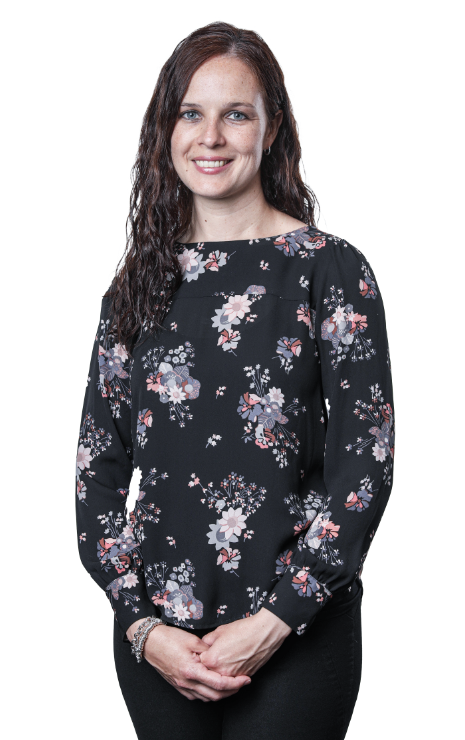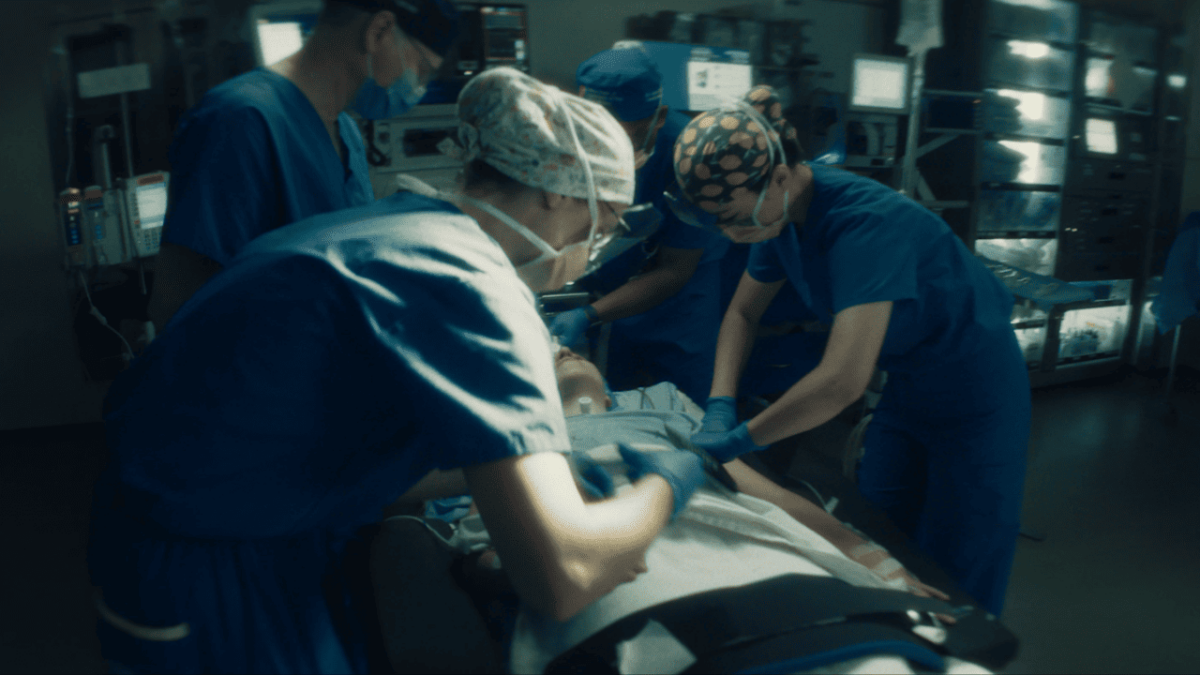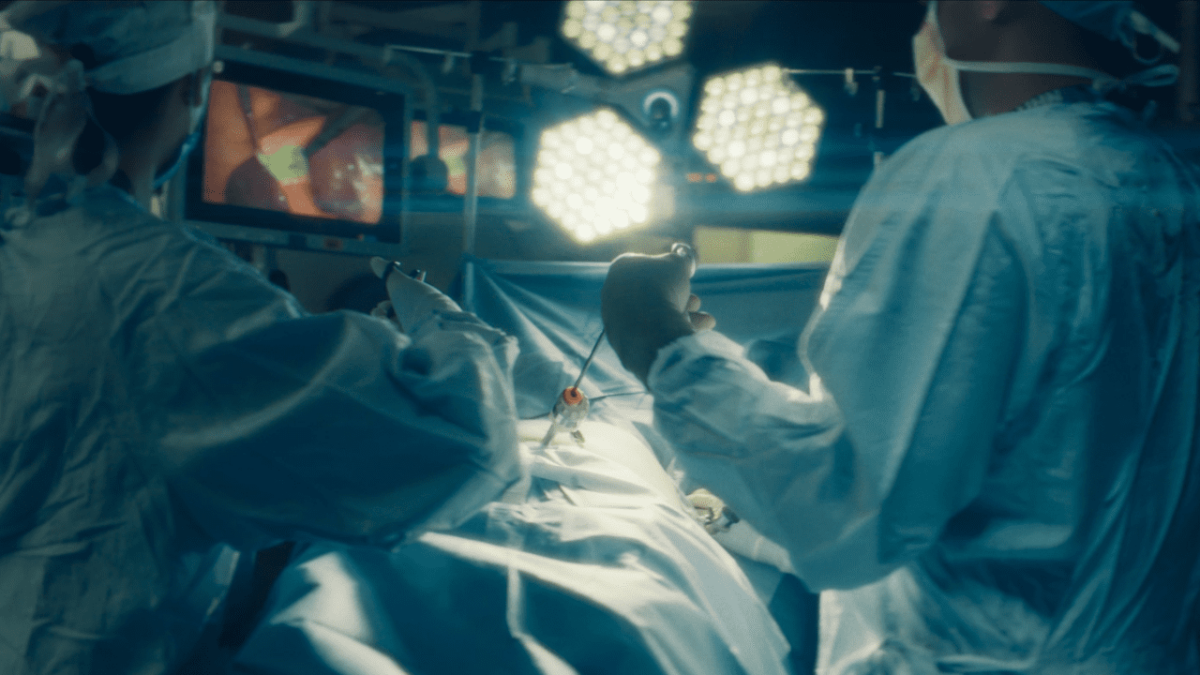Dr. Allan Okrainec helped pioneer a distance-teaching technique called telesimulation to train clinicians worldwide. (Photo: Tim Fraser)
By Wendy Haaf
Standing in front of a suitcase-shaped simulator, a surgeon across the globe manipulates a set of gripper handles connected to instruments via long thin rods. Using images sent from a camera within the simulator to a nearby monitor to guide his movements, the physician delicately finishes tying a surgical knot, then snips the suture material. Thousands of kilometres away in Toronto, Dr. Allan Okrainec, who specializes in laparoscopic surgery, is watching, too. Via Skype, he offers the other clinician feedback and demonstrates how to improve his technique using a similar simulator.
This session, which took place several years ago, was one of the first-ever uses of telesimulation – a distance-teaching technique Dr. Okrainec helped pioneer – in medical education. And the course it was a part of ultimately would prove just how successful this type of hands-on remote learning could be. Still, back then, Dr. Okrainec couldn’t have envisioned the world-class facility that one day would grow out of this remote teaching project: University Health Network’s (UHN’s) new Temerty Advanced Surgical Education and Simulation Centre (TASESC).
Building better remote learning
Occupying 12,500 square feet, TASESC will offer far more than just remote learning: its cutting-edge surgical simulators, labs and simulated operating room will provide a wealth of opportunities for on-site training. With construction of Phase 1 completed early last year, educational programming was slated to start in April 2020, but COVID-19 put those plans on hold.
TASESC is a natural extension of the considerable expertise that Dr. Okrainec, the Centre’s Director, and several colleagues have developed and honed since the 2007 opening of the Temerty/Chang Telesimulation Centre at UHN, a forerunner of the new facility. To date, hundreds of surgeons from around the globe have graduated from its remote training programs, learning advanced skills in specialty areas such as laparoscopy and anesthesia.
“We’re building on this platform and advanced robotic technologies that we’ve developed over the last 10-plus years,” says Dr. Okrainec, Head of the Division of General Surgery in the Sprott Department of Surgery and the Peter A. Crossgrove Chair in General Surgery. “It’s a really exciting space that’s going to have opportunities for training surgeons of the future in very new and innovative areas.”

Top technological tools
The new centre features several state-of-the-art learning spaces. There’s a high-fidelity simulated operating room, which “is as advanced as anything we have on the clinical campuses, and will be a great space for training,” Dr. Okrainec notes. “It’s not just for surgeons, but the entire operative team, including nurses, anesthesiologists, perfusionists and anesthesia assistants.” It will also provide a venue “to rehearse rare scenarios, like CPR in the operating room or a challenging case with a lot of bleeding,” he says. “We can simulate those things and bring in the whole team.”
Sophisticated educational recording equipment is one feature of a 10-bay self-directed skills lab. Here, learners will have around-the-clock access to tools such as virtual reality modules that will allow them to safely develop and hone their surgical skills, including advanced techniques unique to sub-specialties such as neurosurgery and orthopedic surgery.
Concepts conceived in this lab can be trialled and studied across the hall in the innovation hub. Clinical fellows and research trainees across all surgical disciplines will be able to conduct research here, in an atmosphere that promotes the kind of collaboration and shared problem-solving that inspires transformative new ideas.
In addition, the new Centre features telesimulation and remote learning technology that’s light-years ahead of the original laptop-and-Skype setup, including a live conferencing system and state-of-the-art tools for video recording and archiving practice sessions as well. “Technologies that facilitate remote learning are built into the entire Centre,” says Dr. Okrainec.
Saving stalled training
Sprott Surgery’s background in remote learning proved invaluable when the COVID-19 pandemic struck. Six surgeons who had come from other countries for one-year fellowships in lung transplants suddenly saw their training opportunities evaporate. “We were doing very few transplants because we were only open to the sickest patients,” explains Dr. Laura Donahoe, a thoracic and transplant surgeon with the Sprott Department of Surgery, and a specialist in surgical education, who was responsible for teaching these senior fellows the advanced suturing skills involved in lung transplants. “You need to know how to load the needle so it goes through the tissue at exactly the right angle and pick it up without pulling hard enough to tear the tissue, especially when it’s fragile, so I tried to quickly pivot and think, how could we help fellows practice their skills at home?”
She gathered the group together twice weekly via Microsoft Teams for instruction and feedback. The fellows recorded themselves practicing at home, and the class would review the videos and discuss ways they could improve what they were doing, says Dr. Donahoe.
Dr. Donahoe, who is also part of the Ajmera Transplant Centre at UHN, already had experience with technical skill simulations; she co-teaches an annual four-day bootcamp for thoracic surgery residents from across Canada. “We use pig aortas,” which are clipped into metal holders, “and sew them together,” Dr. Donahoe explains. Since this wasn’t feasible for home study, however, Dr. Donahoe had to come up with an alternative with similar physical properties.
“We needed to find a high-fidelity material, meaning, similar to what it’s like in the operating room,” she says. Her solution? Home delivered kits containing metal holders, instruments, sutures and a child’s birthday party staple… “Basically they practiced sewing balloons together,” Dr. Donahoe says. “We changed the difficulty based on whether [the suturing field] was sitting close to them or deeper in the hole, like it would be in a chest,” she adds, using a box or bag to mimic the latter scenario. “We also changed it so that one side was bigger, and they had to size match.”
Launching into the future
Later this year, work will begin on Phase 2 of the Temerty Centre, which will include a large wet-lab simulation space set up with training bays for working with cadavers and other biological materials. Plans are also underway to establish specialized training academies: one in robotic surgery and the other in artificial intelligence (AI).
“We’re interested in AI and machine learning as a way to potentially assess skills and augment surgical teaching,” Dr. Okrainec explains. “As an example, we can envision AI analyzing a surgical procedure and giving automated feedback.”
The AI academy will also provide a place for researching new uses for machine learning and developing new software applications in surgical training and education.
At the robotic surgery academy, professionals from the entire operating room team, including early career residents, fellows, and practicing surgeons, will be able to learn and master new groundbreaking robotic procedures. The Centre will house several state-of-the-art surgical robots and will be a hub for developing and teaching new robotic surgical techniques to surgeons across North America and around the world.
Dr. Donahoe, for one, is eagerly anticipating the opportunity to deliver a more formalized curriculum for lung transplant fellows, as well as other dedicated thoracic surgery initiatives. “The resources there are amazing,” she says. “There are lots of opportunities to really expand and grow.”
Read more in the Sprott Department of Surgery magazine.



